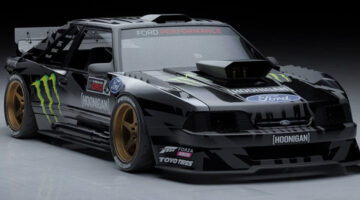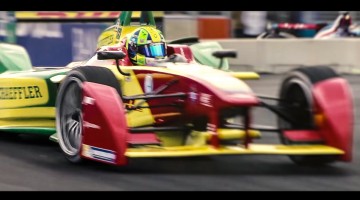Does touring car racing still uphold the time-honoured ‘Win on Sunday, Sell on Monday’ mantra? And if so, how much does the current generation of touring car racing still value this concept with regard its road car division? crankandpiston.com catches up with Head of DTM at Audi Sport Dieter Gass to discuss this.
[Not a valid template]“I think it’s still there. It may not have the same magnitude it had in the past, but for me it’s still there. At the end of the day, motor racing for the spectators needs to look different to our road cars. You need to be able to see that the car on the track goes quicker than the road car through the corners. It’s all part of the appeal.”
It’s a compelling answer to an interesting question: does the ‘Win on Sunday, Sell on Monday’ mantra still exist in motorsport today? It’s an expression that during the 1950s/1960s defined motor racing: a win for a manufacturer on Sunday traditionally led to a spike in showroom sales the following day thanks to the added publicity. Increased development, resources and a dependence on ‘aerodynamics’ over the intervening decades however have seen this dwindle in significance, the connection between motorsport and today’s road cars less obvious than it once was.
At face value, the increasingly popular Deutsche Tourenwagen Masters – Germany’s foremost touring car championship which today is one of the most popular across Europe – could be considered a key offender: look closely and you’ll see very little aesthetic difference between a Mercedes-Benz C-Class Coupe DTM and a BMW M4 DTM (save the badges), nor could their rear wing/ rear diffuser/bumper flap-heavy aero package be described as ‘straight from the showroom floor’. According to Head of DTM at Audi Sport Dieter Gass though – with whom crankandpiston.com recently grabbed a few words – this is a blinkered view.
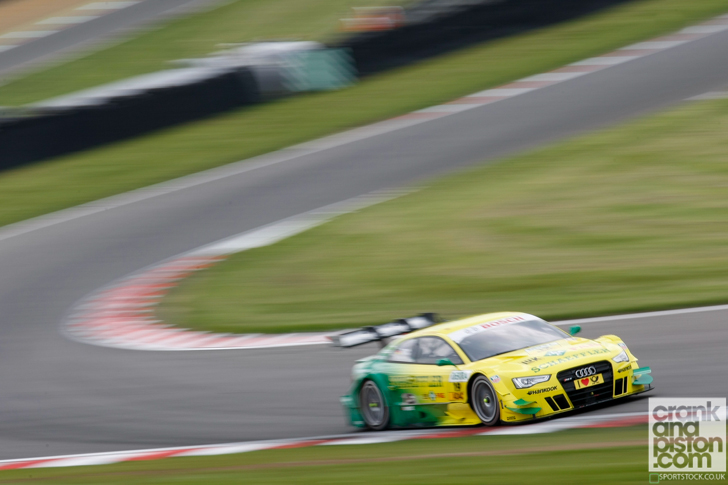
“The DTM, for us, is not a program where we develop new technologies”, Herr Gass explains, “but one in which we compete directly with our market opposition – namely BMW and Mercedes – one-to-one weekend-after-weekend with limited budget. And unlike our Le Mans program where we develop new technology, the DTM is where we have the biggest exchange with the road car development. It’s a series that’s more about cost control, good competition, and marketing. So in that regard, it’s extremely important. To the board, it’s on the same level of importance as the LMP program, but with a different showcase.”
It’s a fair point. Whilst focus on headline racing series across the globe is routed in technical development (albeit now with those all important ‘green’ and ‘cost cutting’ issues), touring cars have proven more down to earth, with interest in ‘the show’ and the rough and tumble therein greater than engineering breakthroughs. A better show after all equals better spectator turnout at events for series organisers, as well as increased media interest. In the interest of keeping competition tight therefore – and thus ‘the show’ better – the introduction of success ballast/’performance weights’ in 2012 as well as the controversial Drag Reduction System system (as seen in Formula 1) have led to closer racing and, ultimately, a more exciting season for spectators. Take the recent DTM round in Austria for instance where barely 0.2s covered the top seven cars in qualifying, a race in which any one of the top ten was in with a shout of victory.
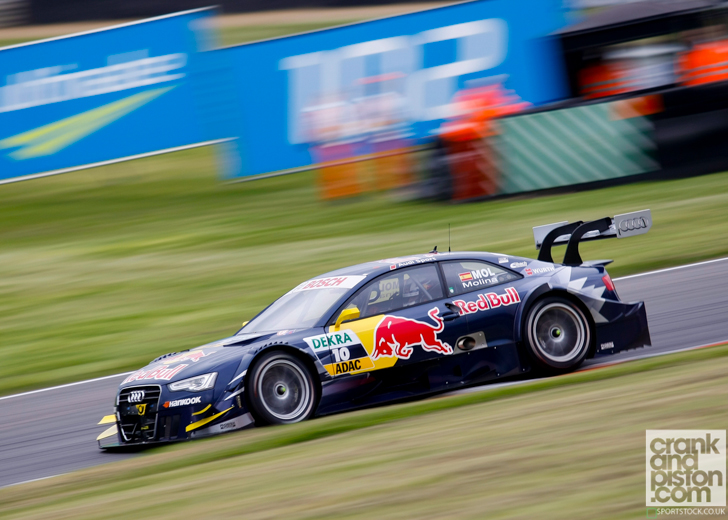
For manufacturers then, reduced performance deficits under the series’ regulations allow any one of them to battle for victory come race weekend. Audi, winless thus far in the 2014 DTM season, has nevertheless taken 10 podiums across seven race weekends and still led the Manufacturer’s Championship after five rounds. Despite not winning on Sunday, the might of the PR machine meant selling ‘the brand’ on Monday was no less difficult. Why else, for example, would manufacturers invest millions of dollars into the sport if it did not ultimately aid their road car divisions?
“We’re still missing that victory,” Gass continues. “We do have a competitive car because we are there every weekend – we are not on the top spot but we are on the podium, and I hope we continue like that. That for me means that hopefully, sooner or later, we’re going to get the victory as well. It’s so close: if you make a slight mistake in qualifying, it’s extremely difficult to recover in the race.”
The link between Audi’s DTM campaign and its road car division then drawn out in kind. That still though leaves the tricky conundrum of the car itself. Yes, a win for a brand does help boost fan appeal (it’s helped keep Ferrari in business for more than 60 years), but does an aerodynamic package really encourage public interest in a particular model? In 2014 and for Audi, it just might.
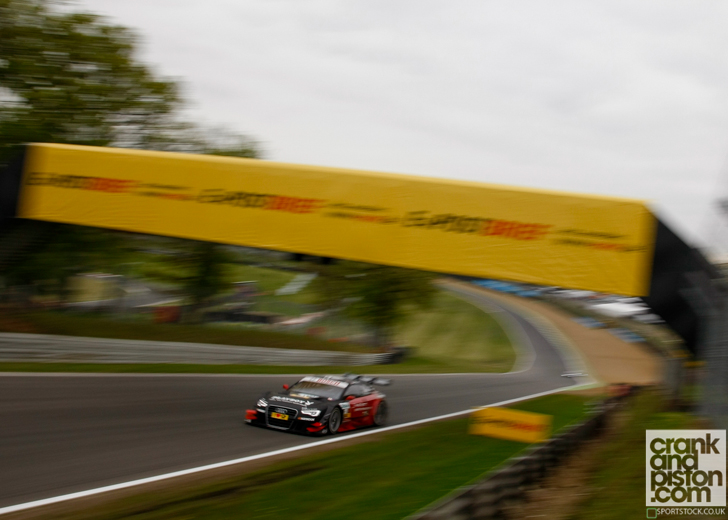
First outlined in 2012, the DTM’s technical regulations included three new initiatives: improving driver safety; a reduction in costs; and ‘an equality of opportunities’ on-track. Whereas in years gone past, all manner of resources would have been thrown at a team’s technical department to make the car lighter, stronger, more aero efficient and, consequently, faster (it’s only money, right?), the occasional market crash means motorsport’s spend thrift nature has gone the way of the dodo. It’s very survival depended on it, with many series and teams closing up shop when sponsors walked and coffers eventually ran out. A freeze then on technical regulations and in-season testing for teams means complete overhauls of a manufacturer’s car is unlikely. The route of success now lies in the details.
“This year, you have a base-line homologation before the start of the season. Powertrain, aero and brakes are homologated both now and into 2015, so we should see the exact same cars again next year. That means there’s very few areas left where you can develop the car.”
True, on the face of it, Audi’s 2014 RS 5 DTM shares little in common with its road-going RS counterpart. The 450hp 4163cc V8 has been ripped out in place of a 460hp 4000c V8 – which may become a 2.0-litre turbocharged four-cylinder after 2016 if regulation rumours are to be believed – while the Quattro all-wheel drive system has also been binned in favour of rear-wheel drive. The DTM’s 1120kg base weight (a minimum according to the regulations) more than halves the 1725kg of the road-going RS 5, whilst Audi sports suspension, OEM brakes and S tronic seven-speed gearbox all get the boot, replaced with race-honed double wishbones, hydraulic dual-circuit braking system/carbon fibre discs, and a six-speed sequential, plus that high strength steel rollover cage and a 118-litre fuel tank. Not exactly what you’d call ‘showroom ready’. Appearances can prove deceptive though…
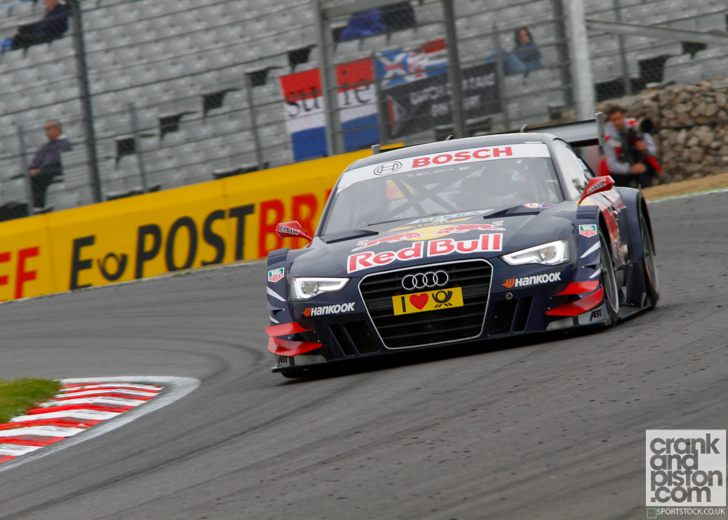
“The aerodynamic development is allowed only below a certain design line of the car, 275mm from the bottom. Everything above has to keep the road car’s silhouette, so the idea is to change the silhouette and keep everything that’s homologated below that the same. Obviously, some dimensions of the silhouette from one model to another change, but it’s about how you can adapt the homologated parts.”
When Audi launched its ’14 DTM contender – codenamed RC3 during development – a greatly restricted technical rulebook meant reading between the lines was much more difficult than in seasons past (“in motor racing it is important to read and interpret the rules in a way that you get the best performance but remain legal”). As such – having focused on ‘the details’ – Audi ended up with a car that bore, apparently, “an even closer resemblance to the sporty production models of the RS line than its predecessor”. Yes, the overall look may have been more aggressive, but Audi’s traditional honeycomb grille (or a lightweight version of such) was incorporated into the build alongside more streamlined wing mirrors and closed rear wheel arches as part of the improved aerodynamics package. The latter two bore significance only to the über fanatics and rival designers looking on for areas to exploit. But to the general public, this new look made a difference. All of a sudden this generic touring car had a face….
A face that also came with a (presumably) whacking great price tag…
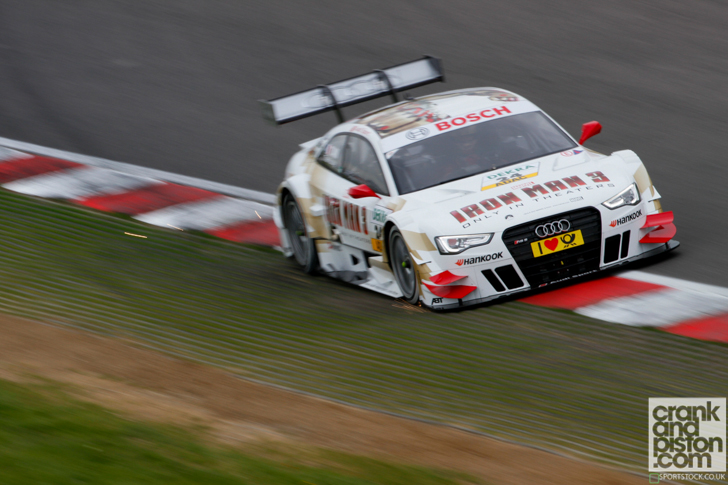
“This is the question we normally try to avoid [laughs]. We normally don’t talk too much about the figures, but I can say that the cost has gone down on the concept we are running now compared to 2011. It’s hard to make a figure because you need to consider development too.”
It’s tempting to speculate that when the new regulations arrive in 2016, this ‘resemblance to sporty models’ could continue, or even improve. By then the RS 5 DTM – which followed on from the A4 and A5 since Audi’s return to the series in 2004 – will have competed for four seasons and will be due a change. Once again, whilst strict regulations make the decision tougher, insight from the road car division is crucial to choosing Audi’s next DTM contender.
“Since 2012 we agreed to run a coupe-style car with two-doors rather than the saloon that we had in the past. Theoretically you could have two cars that fit the regulations – currently we don’t – but theoretically a manufacturer could have that. We try to tune the rules in the way that yes, we’re using a new engine – I think we’re going to get a similar situation with a four-cylinder engine – and you need to go with the times, with downsizing and efficiency, and so on. This is a daily business with the road cars. I don’t think we can afford to ignore that in the long term, but we’re trying to keep the regulations close so that the development freedom and the cost does not go sky high.
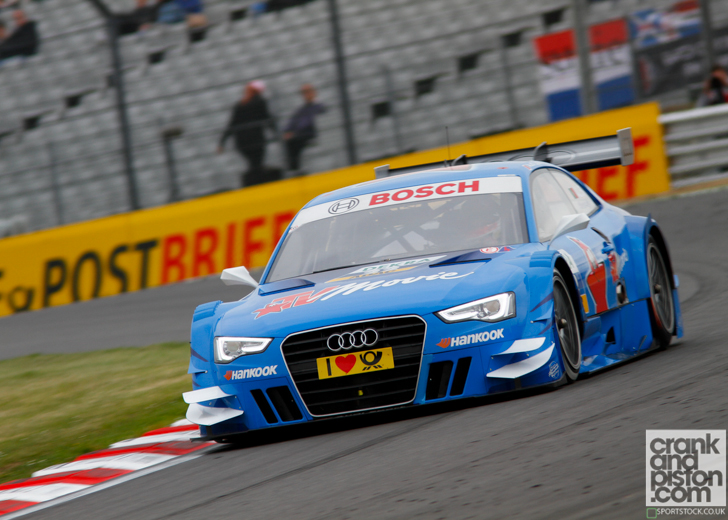
“There are widespread opinions on hybrid technology too. Cost is definitely an issue there. You need to evaluate carefully whether introducing a hybrid gives added value to the championship. Personally I don’t think so. I think the element of energy efficiency in a hybrid for a sprint race is somewhat limited, and if you use push-to-pass, you don’t respect the economic value of a hybrid. You could realise that in a much cheaper way, like DRS which we already have.”
Win on Sunday, Sell on Monday then may not hold the significance that it once did in motorsport. By its very nature though, ‘the biz’ is a fickle entity, one era rolling in after another. Cost cutting and environmental concerns have landed on its doorstep straight from the showroom floor, and given the indelible link between the two, it seems unlikely this will change any time soon. The ‘Win on Sunday, Sell on Monday’ attitude may have changed, but that doesn’t necessarily mean it’s dead.
– Shots from the 2012/2013 DTM races at Brands Hatch courtesy of SportStock
| Audi | RS 5 DTM ('14) | |
|---|---|---|
| Engine: | V8 aspirated engine / 90 degree cylinder angle / 4000cc | |
| Power: | Approx. 500hp | |
| Torque: | Approx. 500Nm | |
| Transmission: | Sequential six-speed sport gearbox / 4-plate CFRP clutch / adjustable multi-plate limited-slip differential / constant-velocity tripod slip-joint shafts / rear-wheel drive | |
| Suspension: | Independent suspension front and rear / double wishbone suspension / pushrod system with spring-damper unit / adjustable gas pressure dampers | |
| Brakes: | Hydraulic dual-circuit braking system / light alloy brake callipers / ventilated carbon fibre brake discs front and rear | |
| Wheels: | Forged aluminium wheels / 12 x 18 inches (front) / 13 x 18 inches (rear) | |
| Tyres: | 300/680 18 (front) / 320/710 18 (rear)/ Hankook “Ventus” | |
| Weight (kerb) | 1120kg | |
| 0-100kph: | N/A | |
| Top speed: | N/A | |
| Price: | Take a guess… |

